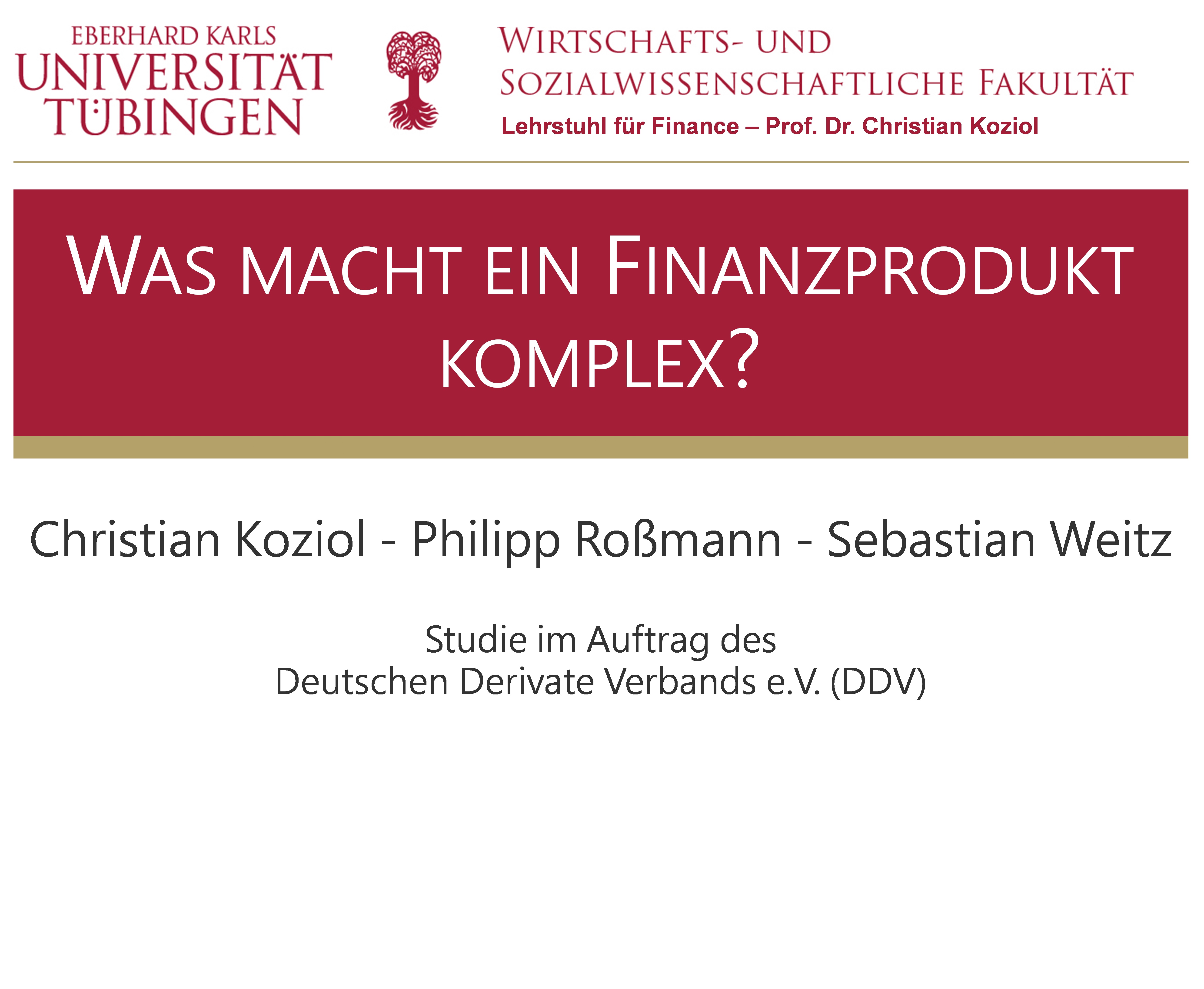Top News
13.12.2018
Complexity of Financial Products - Academic study calls for a rethinking of regulators’ approach
The complexity of a financial product plays a key role in the regulation of the provision of investment advice. With their current definition of complexity, regulators can often mislead investors. A new approach of the University of Tübingen places the investor at the centre instead of the financial product. A financial product is considered non-complex if an investor can determine its exact value at any time. Differences between the investor’s estimate of a financial product’s value and the product’s actual value are defined in the study as the “value surprise.” The greater the value surprise, the more complex the product.
The classification of financial products as complex or non-complex plays a particularly important role in the provision of investment advice. It determines whether a security can be offered for sale without the need for investment advice, and to what degree a detailed explanation of risks is necessary. The current European regulation provides for classification at the product group level. For example, standard life insurance is classified as non-complex, while a DAX future is considered complex. This method of classification is, however, very general. Differences within individual product categories are not considered. The focus of the classification is more on the product and less on its user.
In the study carried out by academics from the University of Tübingen on behalf of the German Derivatives Association (Deutscher Derivate Verband, DDV), the focus is shifted and the user is placed at the centre. An assessment was conducted of the user’s perspective of the complexity of various products from asset classes such as bonds, investment funds, derivatives, and retail structured products. According to the new definition, a product is considered non-complex if the investor can determine its exact value at any time. Differences between the investor’s estimate of a financial product’s value and the product’s actual value are defined in the study as the “value surprise.” The greater the value surprise, the more complex the product. The results demonstrate major differences in complexity within the individual asset classes. Products like life insurance policies and investment funds, which are classified as non-complex in accordance with MiFID II, can prove to be particularly complex. In contrast, a number of supposedly complex products turn out to be very user friendly in reality. In particular, a lack of transparency in portfolio composition, such as is the case with life insurance policies and most actively managed funds, results in greater complexity according to the new definition. A lack of information means that investors cannot determine the value of these products easily and unambiguously. Financial products that are traded on securities exchanges have an advantage here – investors can find out at any time what price the financial product is trading at. This makes determining the value of the product easier, and reduces complexity for investors.
Professor Dr Christian Koziol, Chair of Finance at Eberhard Karls University of Tübingen and co-author of the study, explains: “The classification applied by the European regulator is not consistent with the results of our study. Assessment of complexity should not be sweepingly determined at the level of product category. In addition, the complexity of a financial product’s internal structure should not be equated with complexity of usage from the investor’s perspective. These general assumptions made by the regulator do not capture reality at all.”
Dr Hartmut Knüppel, CEO and Member of the Board of Directors at the DDV, adds: “It is not the regulator’s conception of complexity that matters, but the investor’s conception and how they experience it. Complexity, as it has been defined so far, is not suitable as a criterion for an investor’s purchase decision, and can even be counterproductive and misleading in many cases. In addition to complexity, the risk content of a product plays a particularly important role. Furthermore, non-complex products are not automatically safe and easily to understand, and complex products are not necessarily high risk. Often, greater complexity serves to provide protection against risks. Pursuit of effective investor protection should focus on the comprehensibility and transparency of financial products.”
The study Complexity of Financial Products: a Quantitative and Economic Approach written by Christian Koziol, Philipp Roßmann und Sebastian Weitz is available for download on the homepage of the Chair of Finance.

